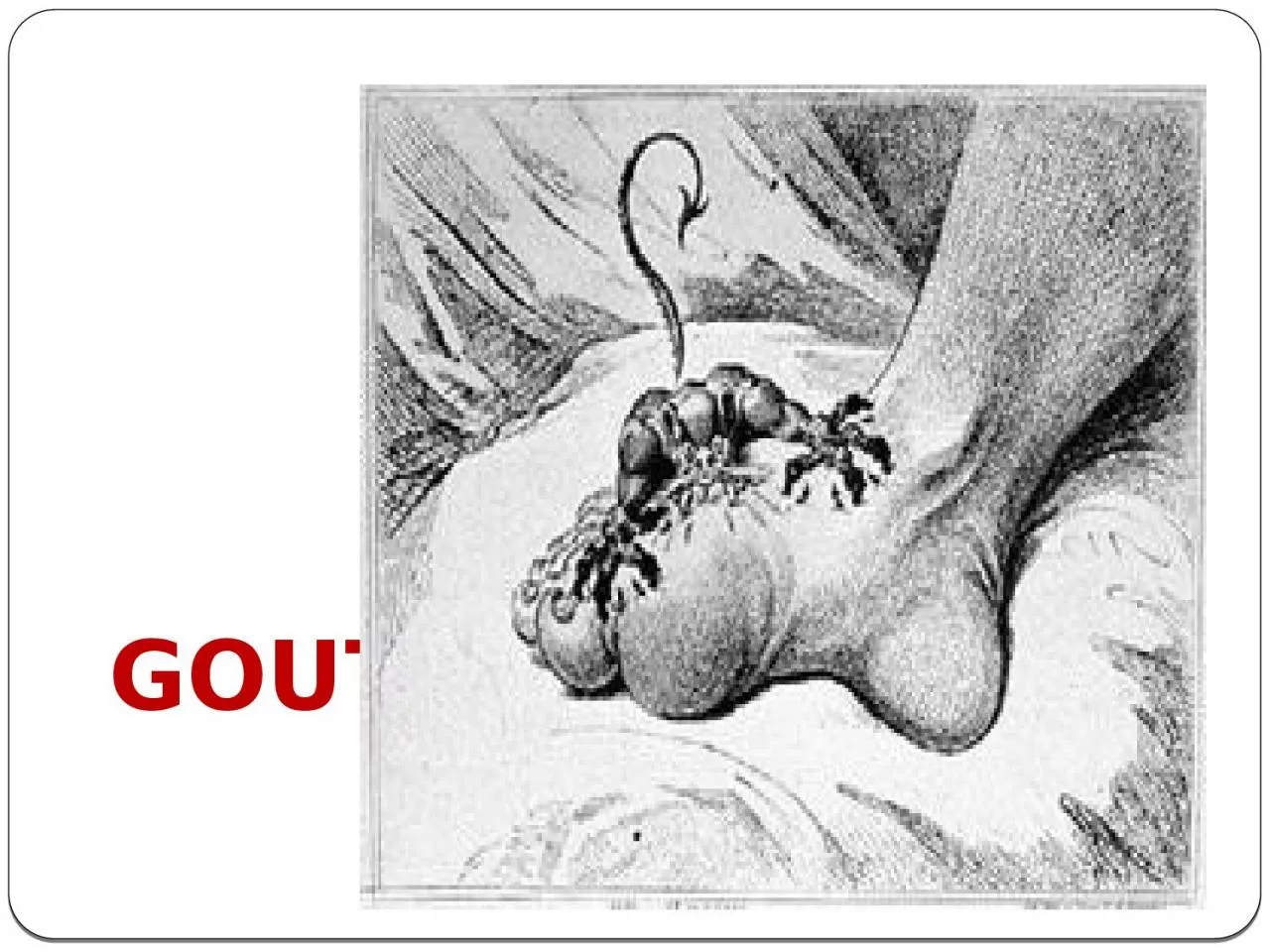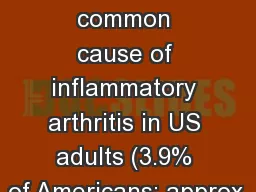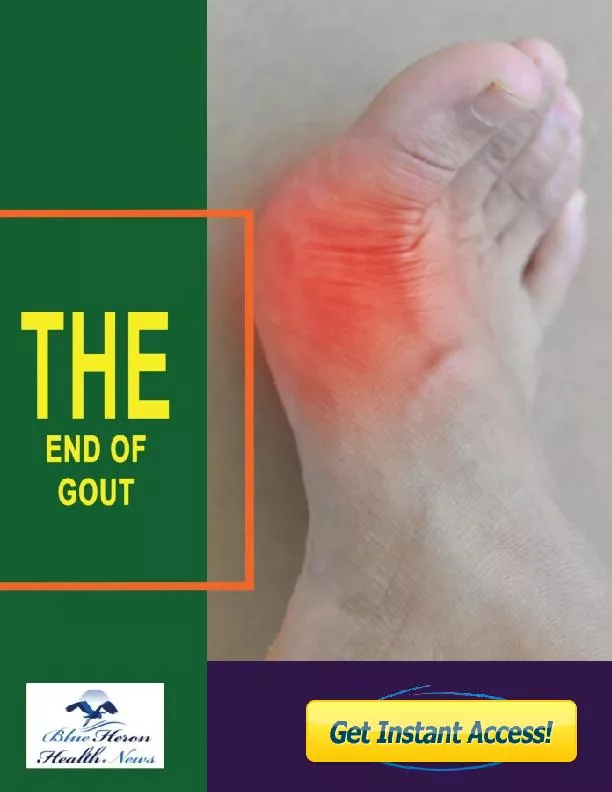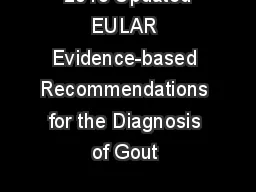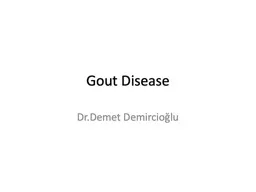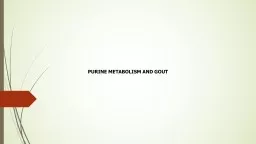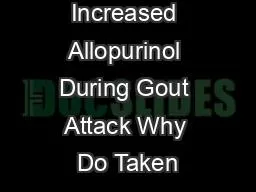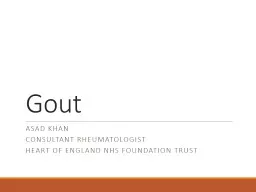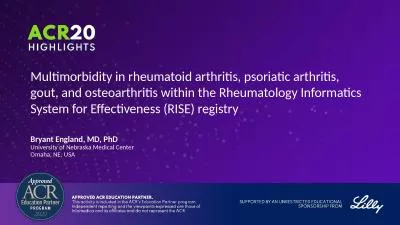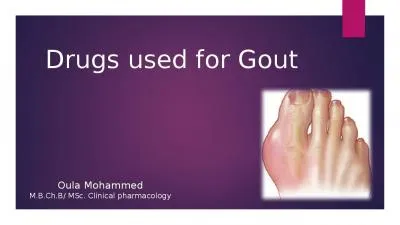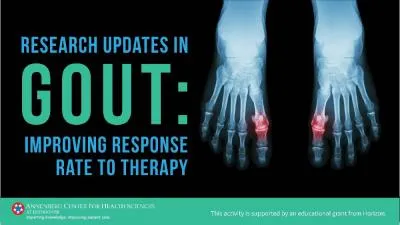PPT-GOUT OBJECTIVES At the end of lectures students should :
Author : mackenzie | Published Date : 2024-01-03
Define gout Describe outlines of treatment Describe treatment of acute gouty arthritis Describe the mechanism of action clinical uses amp side effects of drugs
Presentation Embed Code
Download Presentation
Download Presentation The PPT/PDF document "GOUT OBJECTIVES At the end of lectures s..." is the property of its rightful owner. Permission is granted to download and print the materials on this website for personal, non-commercial use only, and to display it on your personal computer provided you do not modify the materials and that you retain all copyright notices contained in the materials. By downloading content from our website, you accept the terms of this agreement.
GOUT OBJECTIVES At the end of lectures students should :: Transcript
Download Rules Of Document
"GOUT OBJECTIVES At the end of lectures students should :"The content belongs to its owner. You may download and print it for personal use, without modification, and keep all copyright notices. By downloading, you agree to these terms.
Related Documents

